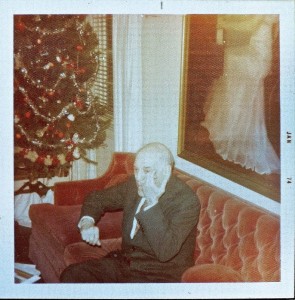
For as far back as I can remember, Tisolay and I have been playing music together, both on the victrola and on the piano to each other. And for almost that long, there have been two records we could put on that would make my grandfather, regardless of what he was doing or where he was in the house, come into the livingroom with his arms waving in the air, bowing and fingering the neck of an imaginary violin; the Franck violin & piano sonata and Mendelssohn’s violin concerto. It was a pretty safe bet, too, that before heading back to his study, he’d slowly growl, “Laura, did you know that your grandfather was the world’s worst violin student?
One day in 2006, a box was delivered to my house from my step-father who, since the unexpected death of my mother the year before, was packing up to leave New Orleans. It contained a few odd and broken tidbits that were left behind after most of her things had been donated to the university where she taught, things I recognized as Granddaddy’s. It was a bittersweet delivery, since shortly after her death, my mother’s lawyer had sent me a letter delivering, in effect, the second of a one-two punch. Just as she had broken my grandmother’s will 2 years before, taking away the half of the estate Tisolay had left me, she had rewritten her will, donating it, together with the rest of her belongings, to her university with specific instruction that nothing was to go to me, especially the things Tisolay had bequeathed to me.
Okay, all I’m going to say about it is this: My mother was a complex person; she was not a bad person. But all her life she had been torn between gratitude to my grandmother for taking so much of my mothering off her shoulders, a job she hadn’t the disposition for, and jealousy, being on the outside looking in on the wonderful relationship my grandmother and I formed. She had no way of knowing that she would die only a year after Tisolay, before time could lead her initial anger at having to share an estate she’d always thought would go solely to her, to a rapprochement that probably would have come about.
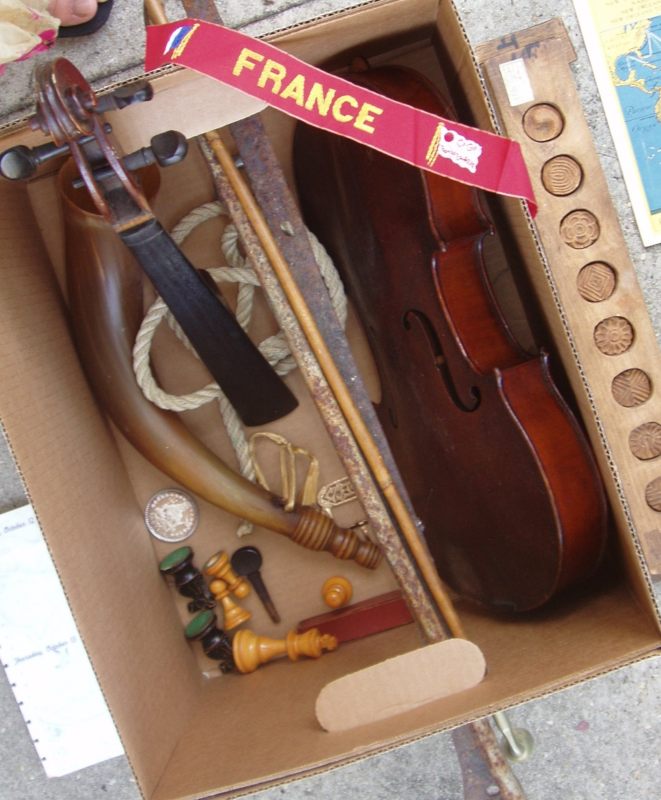
In any case, enough time had passed to lessen the shock of that lawyer’s letter, and post-Katrina construction had come to monopolize too much of my time and attention, so the distraction of Granddaddy’s things was therapeutic. After the initial moment reliving the loss, I took notice that the main item in the box was Granddaddy’s broken violin, snapped cleanly in two pieces and missing all its strings.
Separated from the body, the neck was resting at a semi-perpendicular angle from the body like a mast atop a ship. The tailpiece, bridge and tuning pegs were separated from the body, but intact at the bottom of the box. A folded white silk scarf that I recognized as the one Mama Sitges had given Granddaddy to pad his collar bone where his chin held the violin against it, looked to be in perfect condition even though, being in his preteens at the time, I knew it had to be over a hundred years old. One slip of the hand, though, underneath the top square of fabric to examine the gleaming jacquard pattern in the weave, and the whole top section came off in my hand, the edges continuing to crumble from just the unseen motion of the air. Even as my breath froze and my heart sank, my mind’s eye saw the ragged square as a billowing, war-tattered sail, a sail that could be mounted . . . following my line of sight into the box below my hand . . . onto a long-stemmed opium pipe, a souvenir brought back from a friend’s exotic travels which, if cut in half (*cringe*, yeah, I know) would serve perfectly as yardarms of a mast.
After that, I just remember a flurry of mental images as the broken violin became a magnificent tall ship, and the rest of the box’s contents reconfiguring themselves as parts of a great schooner in an ocean scene . . . his box of chess pieces supplying the king for a captain, a few pawns to serve as deckhands, and two knights to represent the livestock on board, and his little red leather case of throwing dice to round out the cargo ‘waiting on deck with the horses to be loaded below’. There was a piece of old rope with a clamp hook , its utility never known to me but its presence on Granddaddy’s tool shelf in the bathroom a constant throughout my childhood, would look perfect off to the side somewhere, curled into a neat nautical coil. I looked at the little wooden bridge that was meant to keep the strings raised up off the violin’s neck. Ah! Where do captains stand when they’re at the helm? The bridge! . . . too perfect!
But the figurehead . . . I had to come up with a really great figurehead.
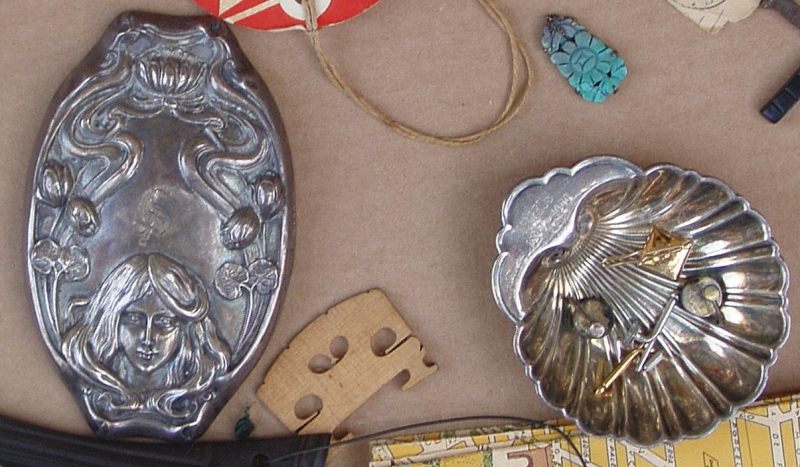
Hmm. Oh! . . I jumped up, knowing just where to go, and went to the shelf where I kept Mama Sitges’ things, Granddaddy’s mother. She had an exquisite Art Nouveau repoussé silver vanity set, and one piece was a child’s hairbrush, or the cover anyway, Granddaddy’s from the early 1890s, with dramatic swirls of hair intertwined with opium poppies (*what’s with the opium?*), the whole framing a fine Victorian beauty’s face. It was smaller than all the other pieces and long ago separated from its brush, and would be chronologically well-paired with his violin from those same early years.
And laid out in front of the captain’s bridge, anchoring the violin’s tailpiece extended forward off the ‘bow of the ship’?… now that’s a figurehead!
And if I brought things in from outside Granddaddy’s box, then a whole ‘nuther well of possibilities opened up, not only of 3D objects, but flat papers, pages, drawings and maps that could be used to line the inside of the box I’d decided to house the project in.
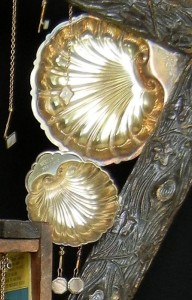
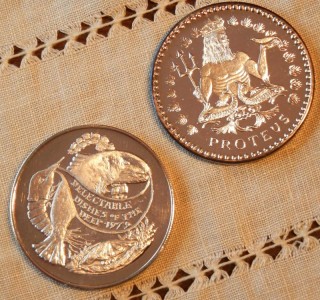
Granddaddy’s Mardi Gras krewes, Proteus & Nereus both, had as their central figure Greek Gods of the ocean, maybe because of the importance of the port linking the Mississippi River with the Gulf of Mexico, and their krewe favors took the form of either the seahorse or the scallop shell. I had the sterling doubloon from ’79, my year, the ones that the maids in the court get, which would work as a hanging moon above the ship, and a box full of Tisolay and Granddaddy’s krewe favors, many of them scallop-shaped silver dishes. They were sorta roundish and moon-like, too. Maybe I should hang a collection of big and little round things like moons and stars from the top of the box I put this thing in. And with that, I brought out Granddaddy’s box of cufflinks from the white tie and tails he wore to the balls, and took out a couple of my favorites, the octagonal black mother-of-pearl ones.
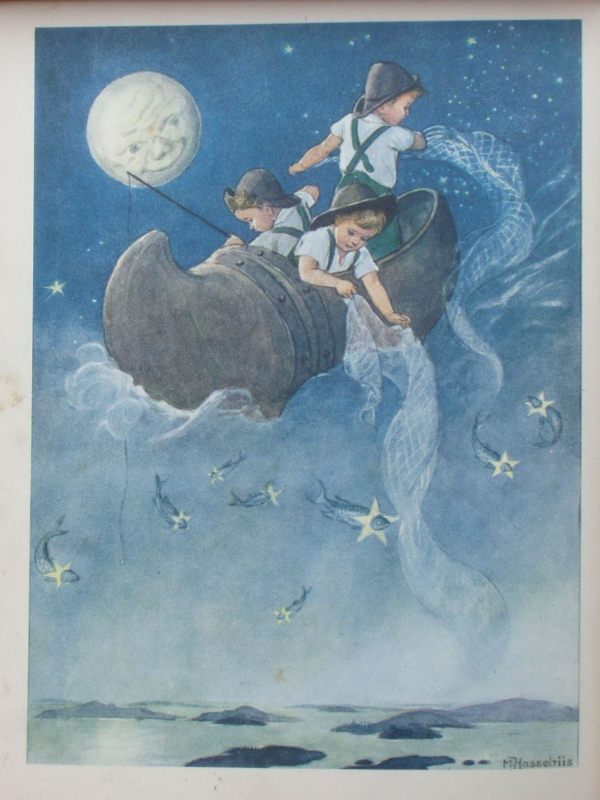
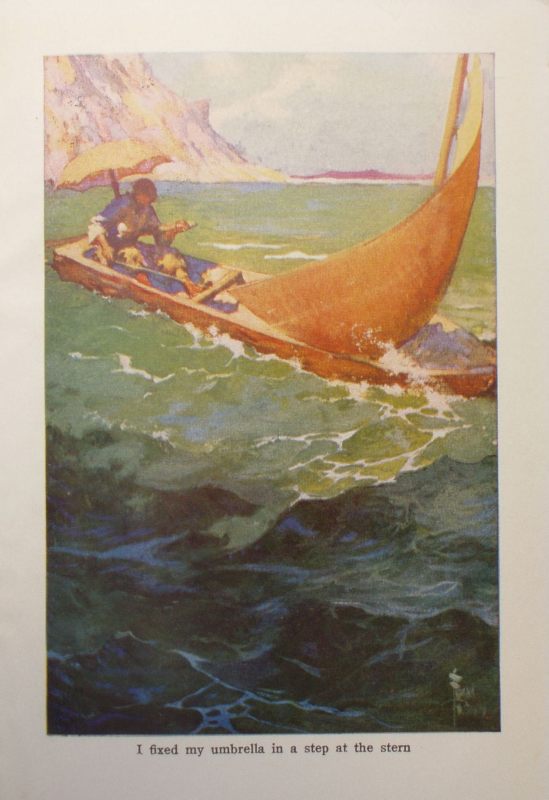
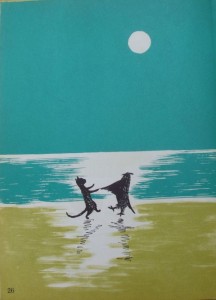
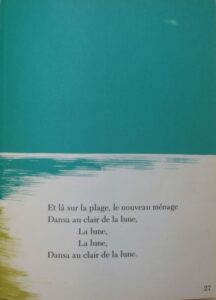
.
.
Another source was my baby books that Tisolay used to read to me, some having been my mother’s before me and very rich in illustrations, and many of which having an ocean theme. I knew every inch of every illustration; Wynken, Blynken and Nod came to mind, as did Robinson Crusoe and The Owl and the Pussycat. It was then that I thought of taking photos of these rather than using the originals. A click of the camera gave me copies I could edit, shrink and print at will, then use as a backdrop on whatever I mounted this whole thing on.

Ah! . . . and then there was that ball-point pen drawing. I climbed back up to my baby things and brought down 4 black weekly planner books, all embossed with ‘National Bank of Commerce’ from the early 1960s. Granddaddy always had unused leftovers at the end of the year, and that’s what Tisolay did her drawings in. In 1967, when I was 9, my father took us on vacation to British Honduras where he had some business deals in the works. It was the first time Tisolay and I had ever been separated. I had never seen the Caribbean before, and my dad had started me in scuba diving lessons for just this purpose, back in the day when they would actually certify a 9-yr-old child. One of my letters home to Tisolay went on and on about it, but I doubt she could have visualized the underwater scene, me in scuba gear, etc., so she drew a picture of me on the beach, dancing in the waves.
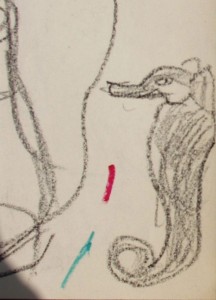
Also in those notebooks were drawings that she and I did together. I was always drawing animals out of Ti’s McCall’s magazines. But one of my favorite things to draw were the clear, mysterious animals from the Baccarat crystal catalog she got before every Christmas. So what did I find to draw? (I find this so telling, given the Rorschach implications of mixed gender traits concerning seahorses. I mean… ‘how do I love doing guy stuff, let me count the ways’.)
The unexpected predominance of the water theme throughout the mementos of Tisolay and Granddaddy’s life became yet more evident with the things Ti saved from their trip to Europe aboard the SS France in 1959, the year after I was born . . . luggage tags, dinner/cabaret reservations, and a ribbon from aboard the SS France, and a map of Florence with its Arno River running through it.
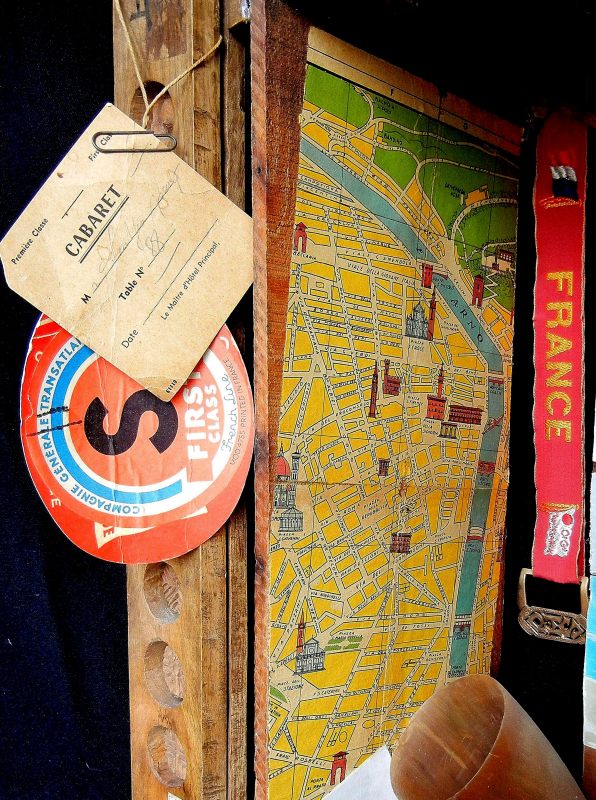
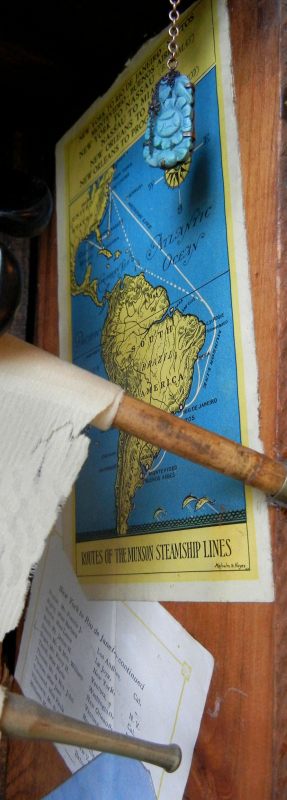
Ti adored Florence, and the Arno’s 1966 flood a few years later broke her heart, damaging so many of the art works she had taught me about, especially the Cimabue crucifix. She read to me everything she could find on the restoration, especially the National Geographic which featured the story later that year.
There was also a pamphlet and passenger list from 30 years before, when the Munson Steamship Line took Granddaddy to Brazil in 1928 for one of his first bank jobs, where he also got the aquamarine ring that scandalized his not-yet-mother-in-law, Tiwazzo. I think it was Granddaddy who first told me about the ceremony they have on ships crossing the equator for those crossing for the first time.
My first stumbling block was how to do water beneath the boat, but the graceful spiral of the cow horn bugle, which had hung over the fireplace by Granddaddy’s chair since as far back as I could remember, and the semi-circular arches of a few of Tisolay’s broken Wedgwood coffee saucers made for good rolling waves.
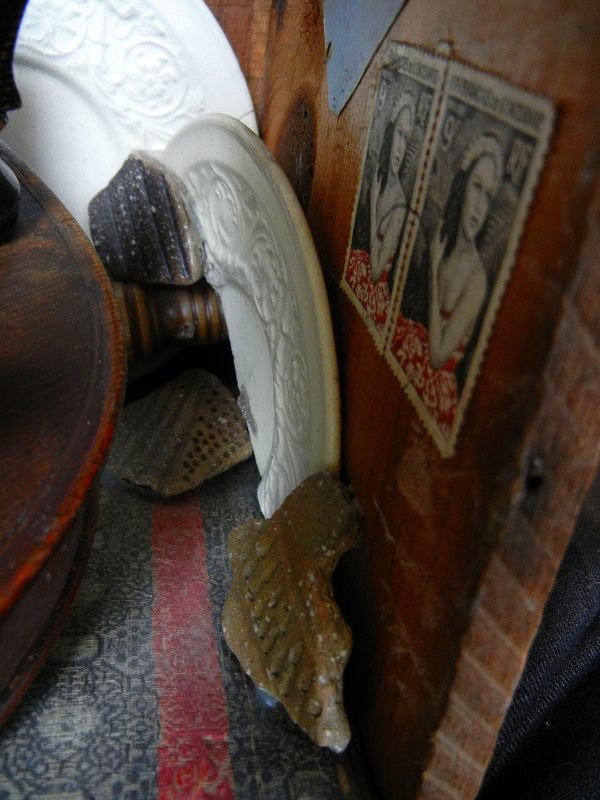
Two French Polynesian island stamps that Ti had torn from a letter and squirreled away in a drawer lent a bit more symbolism to the ‘wave’ artifacts, as did 3 old pottery shards I’d found years ago on the beach of Deer Island on the Gulf Coast, which I later learned was a rich Paleo-Indian midden site from about 10,000 years ago. I guess Katrina washed all that away, though.
An ornate old key, Granddaddy’s gold monogram belt buckle, and a length of gold chain made their way to various hanging places, and a nautical clock I bought to give the piece a utilitarian function was put on top, housed within an old frame from my grandparents’ attic.
With the roundness of the clock, now so thoroughly representing the moon, together with the round silver shells, and the round cufflinks dangling like stars, I went a bit dangling-moon-and-star happy, adding the necklace of round carvings from Tisolay’s set of Chinese turquoise and vermeil jewelry. Definitely overboard (no pun intended) was the Chinese cookie form, with its carved round forms, and I may someday take it off, though it balances the frame that extends off the other side. Still, I was very pleased with my first attempt at a found-art piece. And I think it’s a healthy sign that I could find creativity and fun in things that had come to represent a devastating loss.
It only goes to show; the real treasure I got from Tisolay was something no one could ever take away from me.

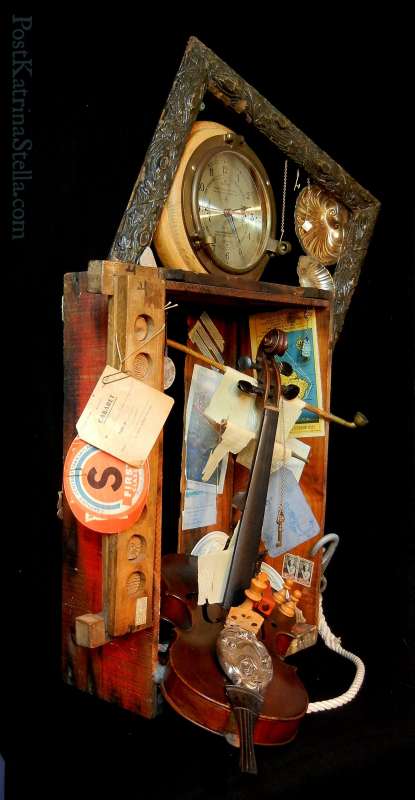
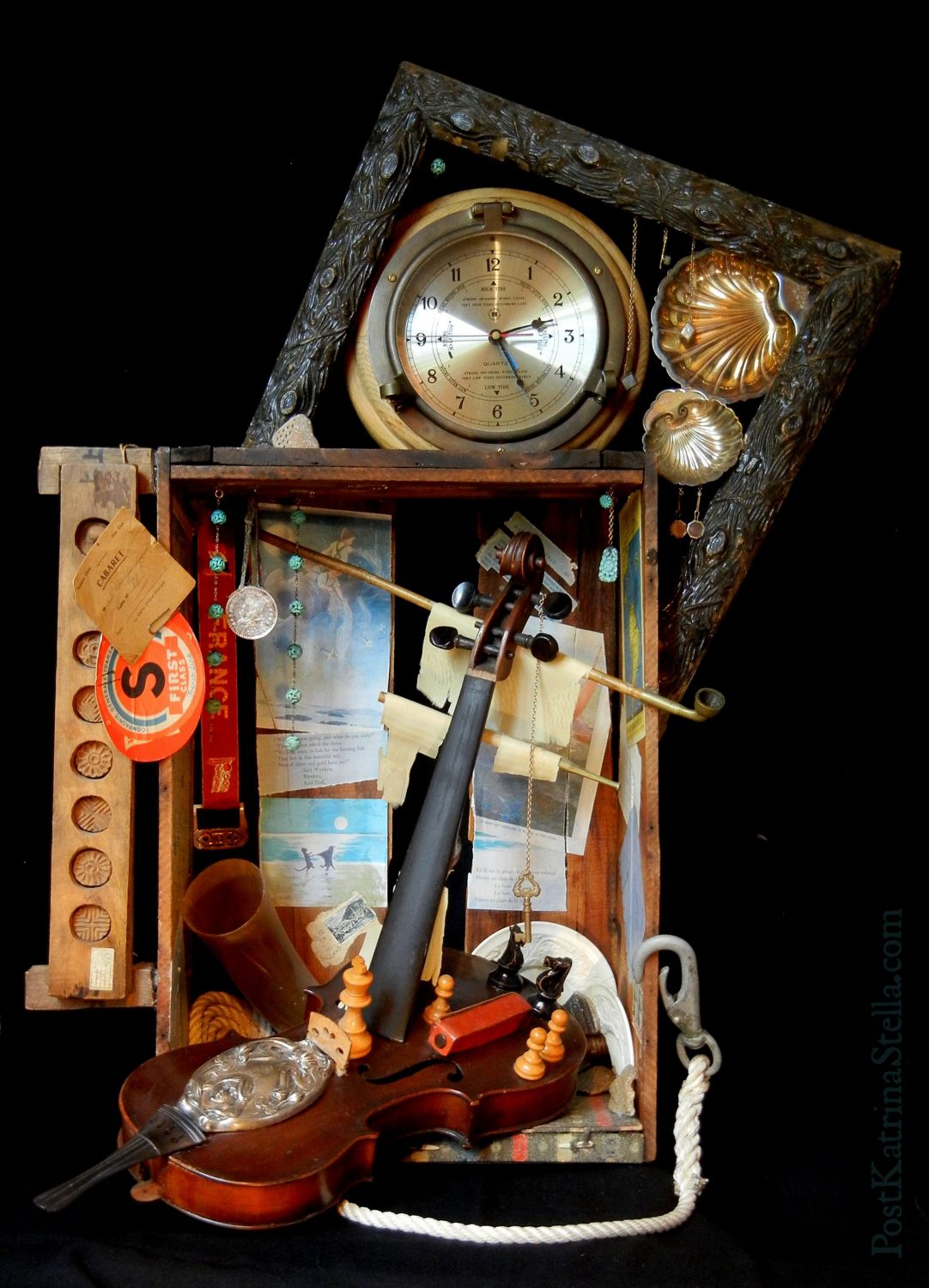
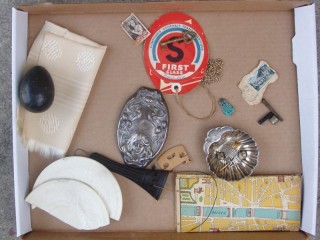
Glorious!!!!!!!!!